John Hurrell – 8 March, 2014
The pieces on the floor rest on added intervening layers, a sort of stratification (perhaps insulation) that provides a metaphor for the way components work mentally on the visitor with cumulative layers of sly interconnections. In the centre of the room is a delicate wooden table with spindly legs (balancing on four carved ‘hooves' painted gold) and above on the upper surface are two vertical forks, on which rest four walking cane or pool cue like objects.
Auckland
g. bridle
the Retreat 2008 - 2014
Curated by Charlotte Huddleston
14 February - 21 March 2014
In this extremely elegant presentation - one that reveals the visual ‘interferences’ of the room in the best Billy Apple tradition - g. bridle presents an assortment of items (some ‘found’) selected from his collection called the Retreat. The placement of each exhibit within the subdued, highly contemplative space is very considered, while his work continues in the foyer with a contrasting video (a jumping waving figure on a rock) that mocks its own exuberant and exhibitionistic presence - but competing with the glare of daylight.
In St. Paul Street’s Gallery Two are four wall items and two on the floor. The pieces on the floor rest on added intervening layers, a sort of stratification (perhaps insulation) that provides a metaphor for the way components work mentally on the visitor with cumulative layers of sly interconnections. In the centre of the room is a delicate wooden table with spindly legs (balancing on four ‘hooves’ of cast bronze) and above on the upper surface are two vertical forks, on which rest four walking cane or pool cue like objects.
The four wooden ‘canes’ are bound together with a length of light cord, its ends sealed in pitch. One is twisted and split with inlay set in its long ‘wound’. Another has a pointed tip at one end, and at its other, a length of bone vertebrae and a rubber ‘stopper’ tip. One other incorporates a smoker’s pipe stem, and a plastic grip tip. Another still is black and very short, a mysterious rod with woven string knobs at each end.
On the grainy table top, with the supporting wooden forks, is a projecting pink wax nipple (also phallus?) about an inch long. Nearby is a fisherman’s fly made with long tufts of animal fur. On the floor, functioning as a doorstop, is a worn stone block, with a drilled hole traversing a corner in cross-section. That suggests it is an anchor.
The displays on the walls resonate with these floor works. Near the door (higher than it) is a crystal decanter stopper jammed into the carved bulb of a smoker’s pipe. The pipe’s stem seems to be in one of canes. On the opposite wall is a framed image, possibly painted in blood, that looks like a tiny leaf, though it could be an animal’s head, like a bat. It might be connected to the fur on the table top, that mammal being perhaps the food source for a vampire bat, with the nipple a symbol for sucking. However it is now known vampire bats don’t suck blood, they lap it up like cats with cream.
On the wall are also two photographs. One is a shot of a lichen covered rock, with a hole paralleling the hole in the door stopper. The other is a view of a lathed wooden toadstool projecting from the huge grey trunk of a long dead tree. The mushroom wood seems to be the same type as the undulating base beneath the doorstop anchor block.
That anchor might be a trope for the viewer’s speculative search for a coherent meaning, the desire for the artist and curator to have selected and positioned objects with an intended rationale in mind. You could however just enjoy the separate elements for their craft and textural qualities, and mysteriousness, seeing them as totally discrete entities that float free of logical explanation, abandoning the possibility of unifying semantic structure.
The anchor by the door seems also connected to the barely detectable foyer film of the frenetic waver, that person (with a bag over their head) being jerkily filmed from a bobbing but anchored boat. Their action could also be a wicked pun on ‘waiver’, an abandoning or giving up of the search for coherence, a disregarding and forsaking. A taunting gloating twist, maybe.
John Hurrell
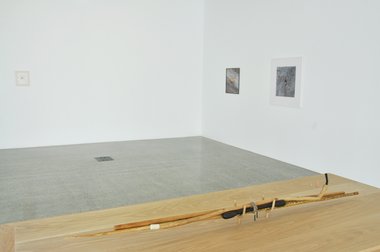

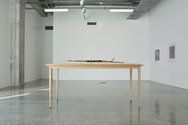
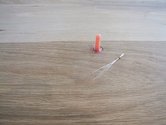
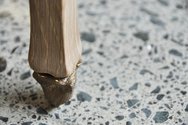
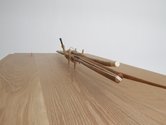
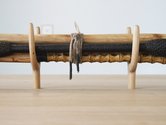

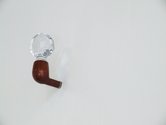
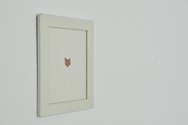
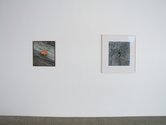
 Advertising in this column
Advertising in this column Two Rooms presents a program of residencies and projects
Two Rooms presents a program of residencies and projects



This Discussion has 0 comments.
Comment
Participate
Register to Participate.
Sign in
Sign in to an existing account.